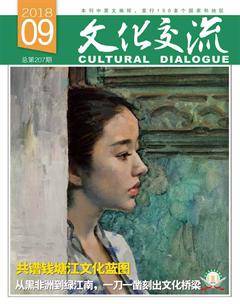一杯免费茶,喝到第41年
祝芷媛
7月17日,杭城正式入伏,热气裹挟了整座城市,行人步履匆匆,渴望一口清凉的茶来缓解这样的暑意。
“叮铃铃”,上午10点,一个写着“最美凉茶铺”的简易小车摊准时出现在杭州长明寺巷。
守摊人叫顾忠根,今年已经80岁高龄了。每年三伏天,顾老伯都会推着小车,从上午10点到下午4点在小区门口摆出凉茶摊,免费给居民和行人提供降暑凉茶,直到白天的暑热退去,他才推着小车离开。
这个摆了41年的凉茶铺,近日在中国美术学院“梦想改造家”队员的帮助下,以全新的面貌出现在小巷里。高颜值的茶铺加上顾老伯的爱心,给今年夏天的杭城送来格外的清凉。
三代人坚守一个凉茶铺
凉茶铺的故事,起源于顾忠根的外婆在下仓桥开的一家茶食糖果店。
每到三伏天,老太太会煮好茶水免费提供给客人饮用。无论是熟悉的街坊还是陌生的游客,都会来讨一杯茶喝,“更多的还是那些拉车运货的体力劳动者。那时候买饮料贵,能喝上一口免费的茶水,再舒服不过了。”
1976年,顾忠根一家搬到了清泰街518号,母亲在家门口摆起了馄饨摊。当时,顾忠根的父亲在临安做一名油漆工,闲时经常帮村民干点活,为了表示感谢,大家会时不时地送他一些茶叶。母亲就把那些茶叶拿来泡茶,免费给过路的人喝。
15年前,顾忠根一家又搬到锅子弄10号楼,这一次的凉茶铺传承人变成了他自己。他把摊子摆在了小区门口,“这是一件好事……母亲去世前还和我说,这个摊要替她摆下去。”顾忠根说。
顾忠根早上5点多就起床,利用峰谷电烧好开水,灌满10个暖水瓶。“每烧一壶,都要等上三四分钟,一大早要听开水壶响上10次。”顾忠根说。等水凉下来后,他再把茶叶、陈皮、青蒿、六月霜、白菊花、仁丹、十滴水等10种中草药,按比例混合,做成一缸“老底子”的杭州凉茶。年纪渐长,他的行动越来越不方便,每当有人劝他不要这么辛苦时,他总是笑眯眯地说:“为人民服务。”
顾忠根的爱心凉茶铺,这些年来一直是杭城一道亮丽的风景线,被赞誉为“杭州最美凉茶铺”,甚至有不少外地游客慕名前来体验。这道最美的风景线,近日也吸引了一支美丽的队伍。
中国美术学院有一个“梦想改造家”小分队,他们致力于用自己的双手,让艺术设计公益帮助在社会上生活困难的群体。在一次团队会议时,有队员问插画师孙楠:“你是杭州人,有没有什么可以改造的项目推荐?”孙楠就想起顾忠根的爱心凉茶铺。
一番讨论后,年轻人一拍即合,主动提出要帮助顾大伯改造一下他的小小凉茶铺,让他能够更方便更长久地继续自己的爱心事业。
美院学生爱心接力助改造
顾忠根原先的茶摊是一个简陋的不锈钢双层小推车,上面摆着一个大搪瓷茶缸。茶缸里面装着的是顾忠根自己泡的茶,车上还堆着不少一次性纸杯。
为了更科学更人性化地设计凉茶铺,“梦想改造家”小分队的同学们前期进行了大量的走访和调查。
“根据顾老伯的要求,我们给小推车加上了把手,还把原来车子的下半部分用PVC板围成了一个收纳的空间,用磁铁把小黑板固定在上面,翻下来就可以当作收纳空间的门。”孙楠说。
为了解决原来小推车不方便挪動的问题,同学们把自行车把手安装在了小推车上,这样不仅活动自如,而且还保留了拨一拨就响的小车铃,轮子上也安装了小小机关,轻轻扣下就能防止车轮滑动,安全省心。
“因为每次烧完水都要自然晾凉,我们换成两只小的茶缸,可以让水晾起来更快一些。另外顾大伯起先用的是搪瓷缸,还有饮茶人在上面写着‘好人长寿,后来因为穿底,就换成了铁制的,这次我们还是把它换回搪瓷茶缸。”孙楠说。
茶缸是整个凉茶铺的精髓,同学们在美化搪瓷缸的过程中花了不少心思。“最美凉茶”四个字的底色经过反复斟酌才决定,最后决定使用跟整体摊位色调一致的墨绿。而且光一个“茶”字,同学们就设计了好几个极具艺术感的版本。
顾忠根的凉茶配方是从外婆那里传下来的,用了40多年。因为清热降暑又好喝,常常有路人来询问配方。小分队的同学了解到这个情况以后,直接将配方画在了一块小招牌上,招牌上每一棵植物都是同学们亲手设计的。
同学们还在小推车的一角安上了自动取杯装置,让行人们可以自助取水。
当然,小分队的改造不止于凉茶铺本身。同学们为摊主顾忠根量身打造了一条袖口印有茶叶的T恤和米白色的大围裙。在制作的时候,光是为了胸口上的几个小字,同学们就废掉了两三条同款围裙,最后提交给顾大伯的是反复试验后最满意的一条。
对于前来帮忙的志愿者,同学们也贴心定制了一批好看又舒适的“制服”——胸前印着“最美凉茶摊”几个大字。
这一场改造,前后花了两周左右时间。在杭州的入伏之日,顾忠根就推着小推车全新出摊了。
“不仅仅为了人而设计,还要为了社会而设计,能够把所学的东西运用到服务社会上,这是导师希望我们做到,也是我们正在努力做到的。”小分队队员徐曦说道。
据了解,这几年,杭州上城区长明寺巷社区的20多名志愿者也主动来帮忙。“天气热,老人会渐渐吃不消,我们每天有两个志愿者来凉茶摊帮忙,希望传承这份爱心。”71岁的志愿者吕叶根说。
一个传承了三代的凉茶铺,一位坚守着的爱心传承人,一群有设计梦想的同学,一场爱心共通的援助,在这个夏天,为杭城送来了一抹清凉。
Family Continues Free Tea Drink Service
By Zhu Zhiyuan
When the hottest days of the summer began on July 17 this year according to the lunar calendar, the 80-year-old Gu Zhonggen pushed his tea cart to the gate of the residential community where he lives and began the familys free tea service for passersby.
The hottest days of the summer is a Chinese tradition closely associated with the lunar calendar. The hottest days are usually divided in three sections. When the first day starts is clearly indicated in the lunar calendar. It moves around in early and middle July. In 2017, the hottest summer days started on July 12. This year, it was July 17. The duration also varies. Usually the period lasts 40 days: 10 in the first phase, 20 in the second, and 10 again in the last. One needs to check the lunar calendar for sure. Just like other important traditional days such as 24 solar terms and festivals on the lunar calendar, the beginning and the ending of the hottest days are also mentioned in Chinas modern-day weather forecast. People have traditional ways to cope with the summer heat. Special food and herbal beverage as well as TCM therapies for chronic winter medical conditions are all part of the ways Chinese people cope with the hottest summer days. In the hottest summer days, Gu runs his service from 10 in the morning until 4 in the afternoon, hottest hours of a day.
The free offer of herbal tea to passersby in the street has been a tradition maintained by Gus family for three generations. His maternal grandmother ran a candy and tea shop in a downtown lane. When the hottest days of the summer began, she offered free herbal tea to passersby. Neighbors as well as visitors often came to have a free drink. But the grandma had a target group of clients: passing laborers pulling cargo carts through the city. Back then, Hangzhou had few wide streets. Bridges, lanes, narrow streets were the essential components of the cityscape and cargo carts were a key part of the citys logistic system that distributed the goods to retailers in tiny shops.
In 1976, the family moved to a house in Qingtai Street. Gus mom started a small snack food business in front of her house. Back then, Gus father was a house decorator who followed work in Linan, a rural county back then, now a district of the city. When he wasnt busy with work, he helped neighbors do some chores and received tealeaves from them. The father brought the tea home. In the hottest days of the summer, Gus mother prepared herbal tea and provided the drink free to passersby. Fifteen years ago, the family moved again to an apartment building. Gu carries on the family free tea service at the front gate of the residential community. “My mom asked me to keep doing it before she passed away,” said the 80-year-old.
If the free tea service at the house of Qingtai Street 518 is a point of the familys generosity in the hottest summer days, we need to go back more than 40 years old to see the family tradition. And if we trace further back to the years when Gus maternal grandmother operated her summer tea service at the candy shop, the generosity is time-honored much longer.
The familys recipe of the herbal tea has ten ingredients. In the hottest summer days, Gu begins to boil water in an electric kettle at 5 in the morning when electricity is much cheaper. He fills ten thermos bottles.
Local media has long since covered the Gu familys free tea service in the hottest summer days. Gu is a hero, in many peoples eye. Some people go out of their ways to visit the tea stall to meet the hero and enjoy a free drink. Volunteers have assisted Gu as the man is growing old. In 2018, a group of designer volunteers in Hangzhou who call themselves dream reformers helped redesign and rebuilt the cart Gu uses for the service.
In the past the wheeled cart was a simple stainless steel structure. A big enameled water pail for the herbal tea sat on the platform. And disposable paper cups were also heaped on the top platform for visitors. To make the cart easy to maneuver, the team installed a handlebar and a bell on the cart. Now the cart uses a simple break system so that the cart can stay motionless and secure in one place. The enameled pail is replaced with two smaller containers: easy to let the boiled water cool off and easy to stash the containers away into the space under the top inside the cart. The recipe is now copied onto a small bulletin board so that those who want it can see it and copy it themselves. Gu now wears a new apron especially designed by the team for the tea service. The team also made special uniforms for volunteers who help out at the tea stall. It took the team two weeks to do research and design and make.
In recent years, volunteers from the community have helped Gu out with the free tea service. Two volunteers per day help at the stall. “The hottest days are challenging to the old man whose health is declining. We volunteers come here to help and hope to carry on Gu familys generosity,” said the 71-year-old Lyu Yegen.
With the free herbal tea of the Gu family and a great variety of similar generosities from the general public, the city is really cool in the summer.

